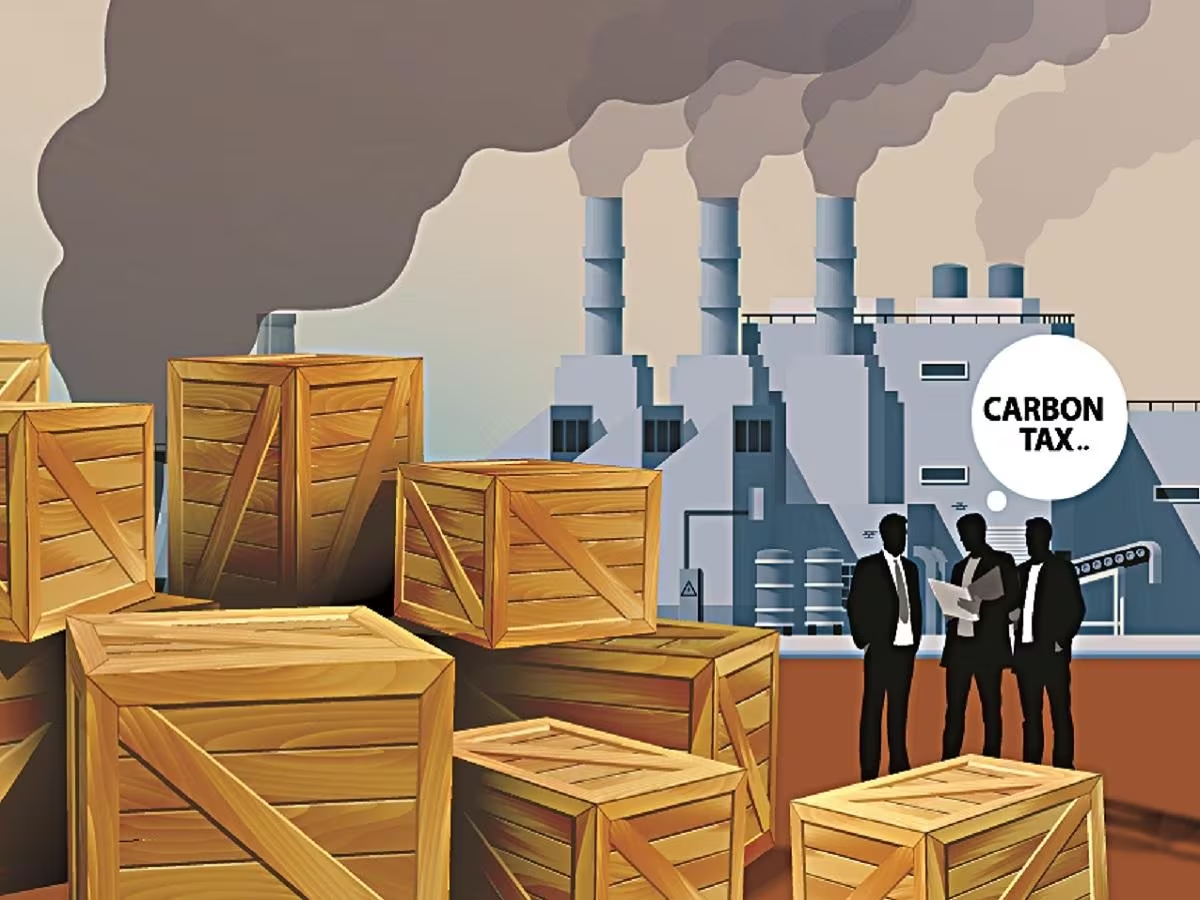In Short : Carbon Capture, Use and Storage or CCUS is a controversial method of ‘carbon management’ supported by major fossil fuel producing firms and countries. However, analysis, including new reports launched during COP28
In Detail : While Indian government leaders have described it as an ‘unfair’ tax, industry representatives at the UN Climate Change conference are advocating a change of tactic
“We welcome CBAM.” Indian industry representatives have echoed this at the United Nation’s 28th Conference of Parties (COP28) referring to Europe’s new carbon tax launched last October.
As climate talks approach the slog overs at the climate conference being held in Dubai, the conversations are becoming shorter and frank. This includes representatives from India speaking at dozens of side events.
Some of them are already dealing with a new pain point which is the European Union’s Carbon Border Adjustment Mechanism (CBAM). Simply put, it’s a carbon tax on the imports of carbon-intensive sectors, initially like iron and steel, cement, fertiliser and aluminium depending on the carbon emissions emitted during the manufacturing process. It is expected to drive up prices; for example, for aluminium it is estimated to be in the range of 2-5%.
However, while Indian government leaders have described it as an “unfair” tax and are taking it up with the World Trade Organisation (WTO), industry representatives at the UN Climate Change conference are advocating a change of tactic.
Rajiv Mangal, Tata Steel’s Vice President of Safety, Health and Sustainability spoke to me at a side event on steel decarbonisation. “CBAM is good. CBAM is good because it will force the market to pay the price. So I would go to the extent that something similar should come up in most of the countries. Otherwise there is no economic incentive for a steel maker to reduce emissions. Because today, the reduction of emissions is a high cost. Market is not going to support you to say just because you are making green steel you can compromise on your profitability. The market does not do that. So there has to be some economic incentive or a stick for greening.”
Seema Arora, Deputy Director General at the Confederation of Indian Industry (CII) and head of the CII-ITC Centre of Excellence for Sustainable Development, echoes this approach. “I don’t think there is any point in saying we can’t accept it because it is not non-discriminatory. They are saying the same rule applies to our companies also. So you can’t fight it in the WTO although I know they are going to fight which is okay. But I don’t think much result will come out of that.”
The question then is what is to be done. Ms. Arora backs a strategy which the government is also considering, which is to collect and keep the tax within India. “If there is any kind of tax that is to be collected, we collect it here. And we use it to then decarbonize our companies, even the MSME (micro, small and medium enterprises) sector. So those are the kind of things we are actually discussing and the government is also discussing.”
However, Tata Steel, which has a market cap of almost $20 billion, is advocating a different kind of policy support, like subsidies, along the lines of the United States’ Inflation Reduction Act (IRA) which is essentially incentivising ‘green’ economic measures. Mr. Mangal says, “Europe (is) getting into CBAM. The U.S. has got IRA. If you produce hydrogen up to $3.5 per kg of hydrogen it is subsidised by the government. So that’s why after a few years the U.S. will be the largest consumer of hydrogen, largest consumer of carbon capture and use. Largely because of the incentives that the government has been giving. So there is a need for policy support.”
Carbon Capture, Use and Storage or CCUS is a controversial method of ‘carbon management’ supported by major fossil fuel producing firms and countries. However, analysis, including new reports launched during COP28, show that the technologies to capture carbon are expensive and reduce little emissions compared to how much is required—43% cut in emissions by 2030—to keep to the global warming target of 1.5° celsius. The International Energy Agency chief warned the oil and gas sector for banking on CCS to remove emissions on a large scale, calling it an “illusion.”
Mr. Mangal says India should set a base standard for carbon below which people will benefit and above it carbon emitters will be penalised. “It should start with that. Based on that you can put an import parity. Otherwise India will get dumped with high carbon steel, if it is just left to the lowest price.”
Taking a broader view of carbon tax, Ms. Arora says India needs to be “a little creative” about CBAM and hear-out the concerns of industries. “We can build our own reporting, companies don’t want to share the data with the European Union, but they can share it with the government here, right? If the government can maintain that confidentiality and they can also then see that okay, realistically we have to counter this CBAM, let’s put a levy because if they pay a levy here then they don’t have to pay it there. So let it remain in the country and use it for your own purposes.”
Bringing the players together, she acknowledges won’t be easy as some may not even agree because there will be varying amounts of levies on various companies, depending on size and technology. This is why industry representatives are urging the government for policy direction.

